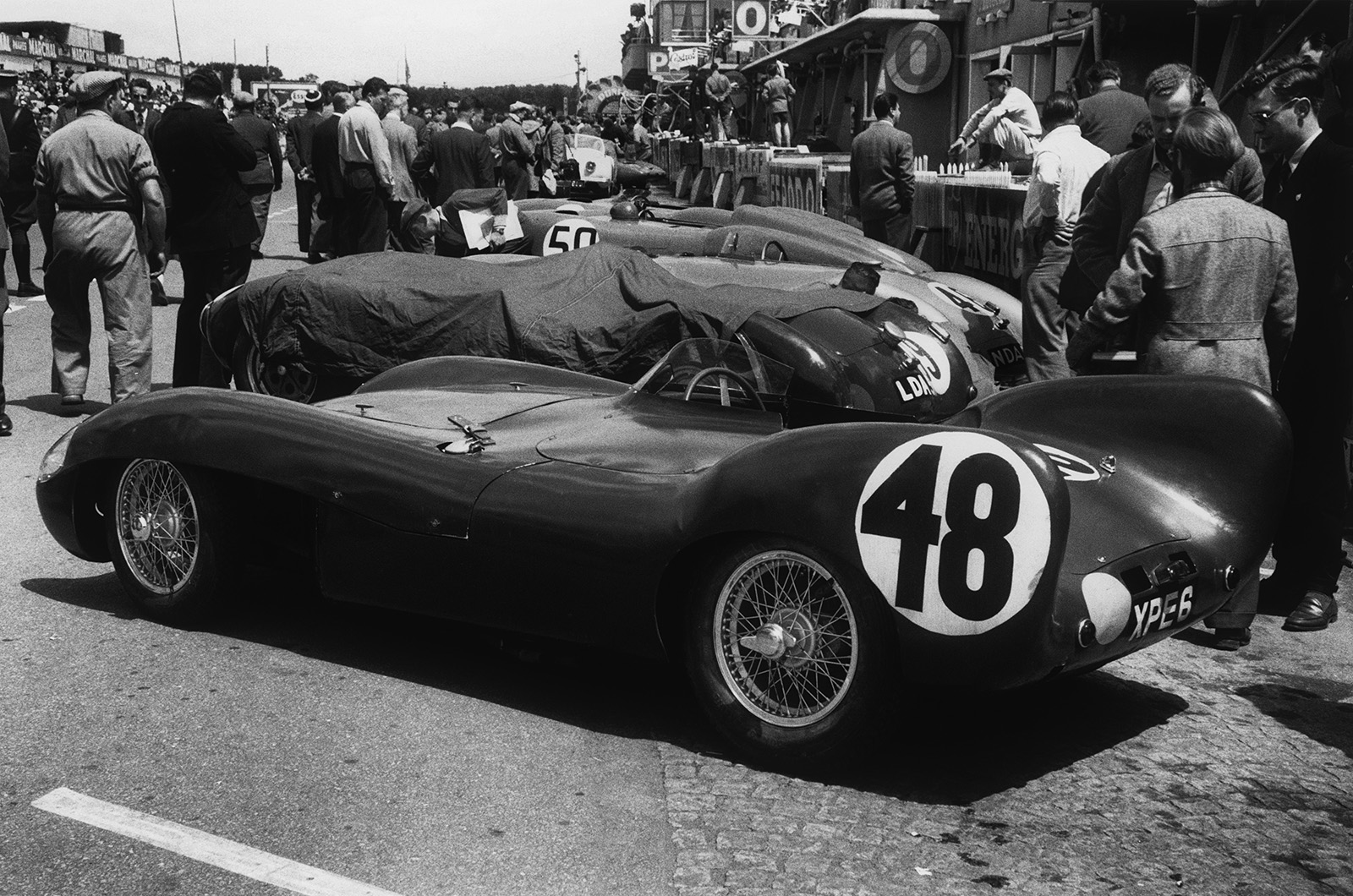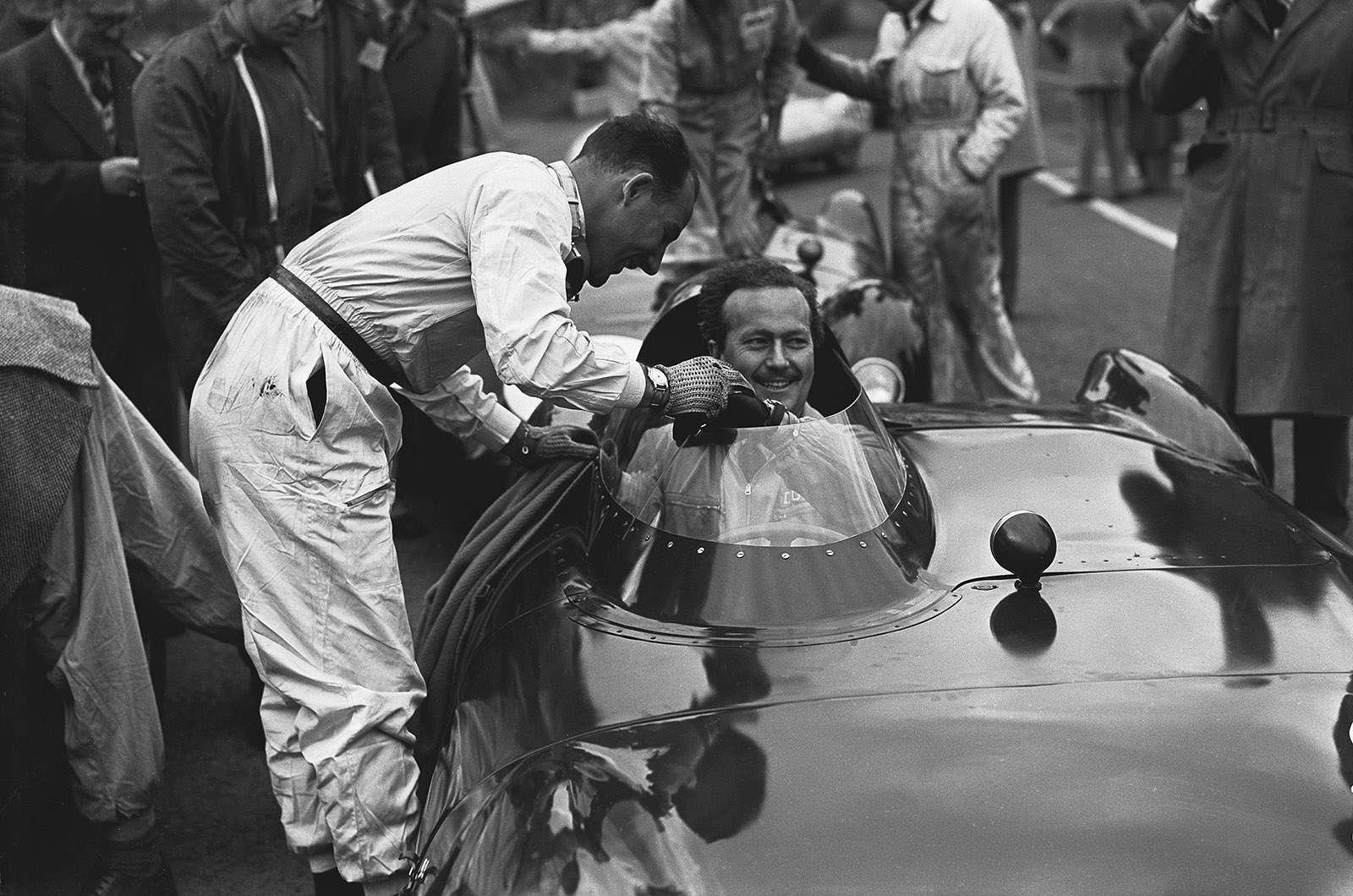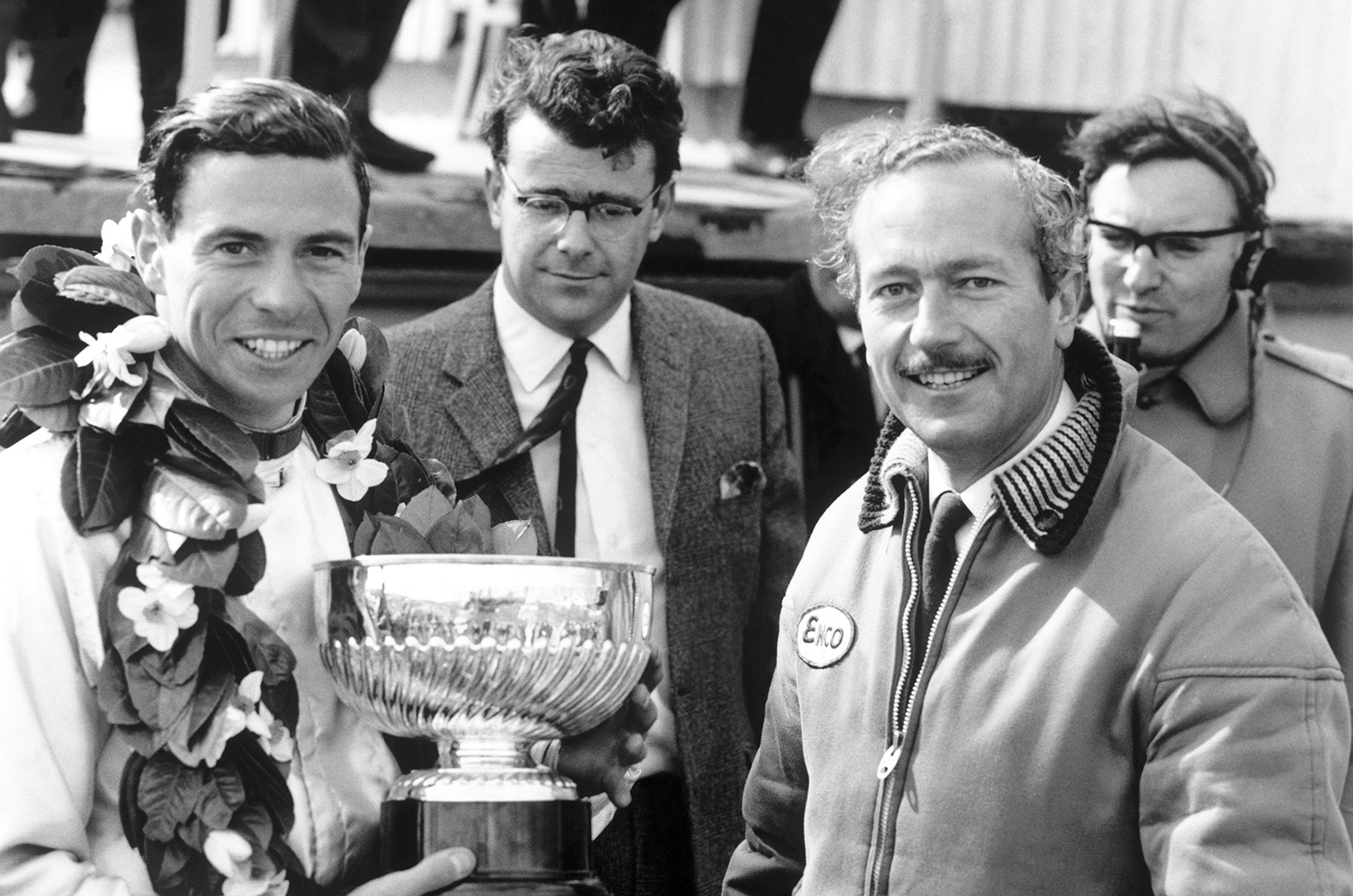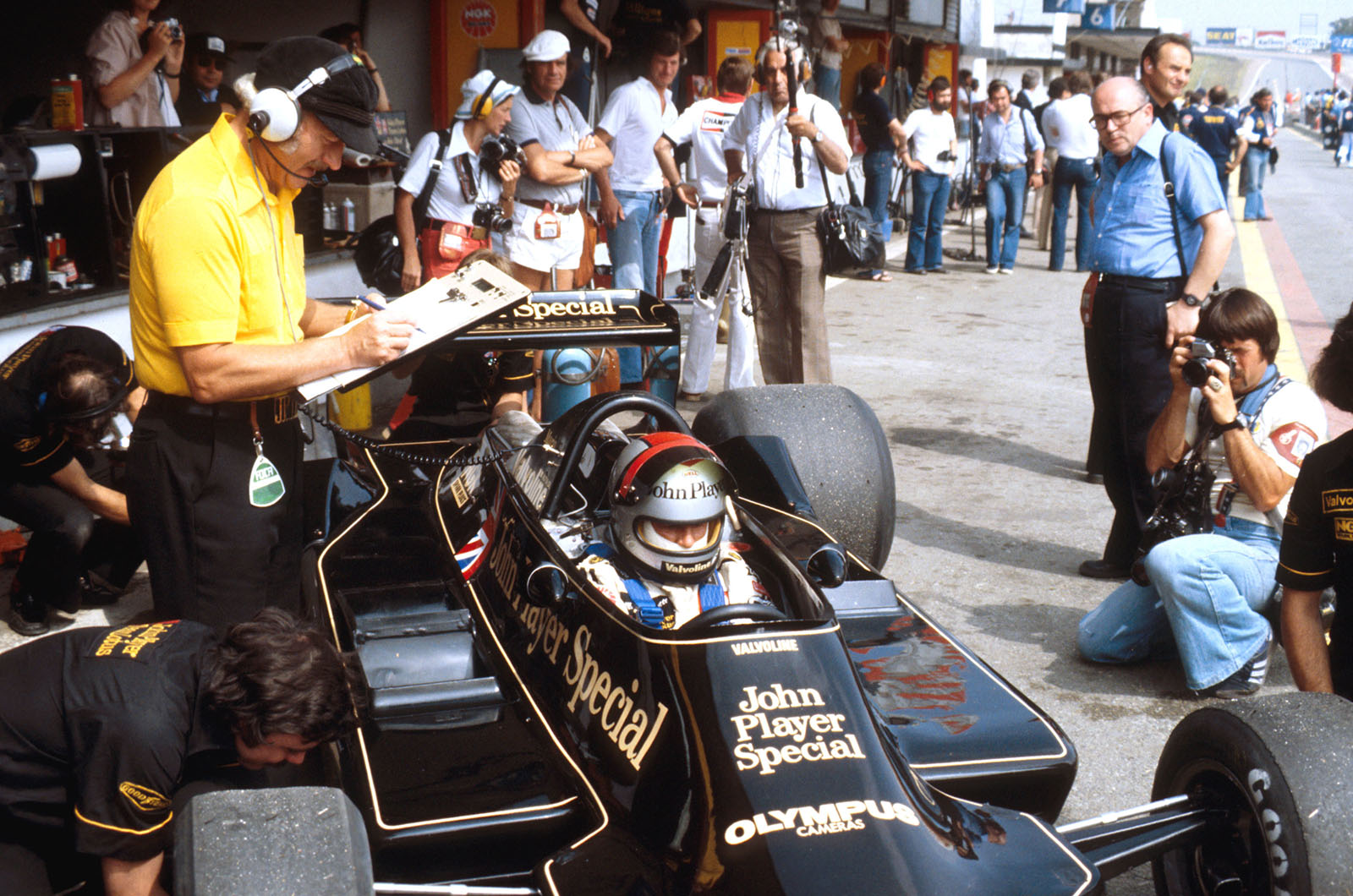
Denis Jenkinson was not a man who was liberal with his praise.
Anyone who received a good word from the revered Motor Sport correspondent must have truly earned it, which makes it telling that – in his superb 1958 book The Racing Driver – there is a photograph with the following caption…
‘A designer who can drive a racing car is worth his weight in gold, and here we see Roy Salvadori telling Peter Berthon all about the BRM car the latter has designed. In the centre is Colin Chapman, unconvinced of Salvadori’s story, having just driven the car, and about to redesign the suspension for the Bourne concern.
‘Chapman is one of the few racing car designers who can drive fast, and it is a moot point whether his ability as a racing driver is not better than his designing ability, but both are of an extremely high standard, so he has little need of drivers, other than as competitors.’
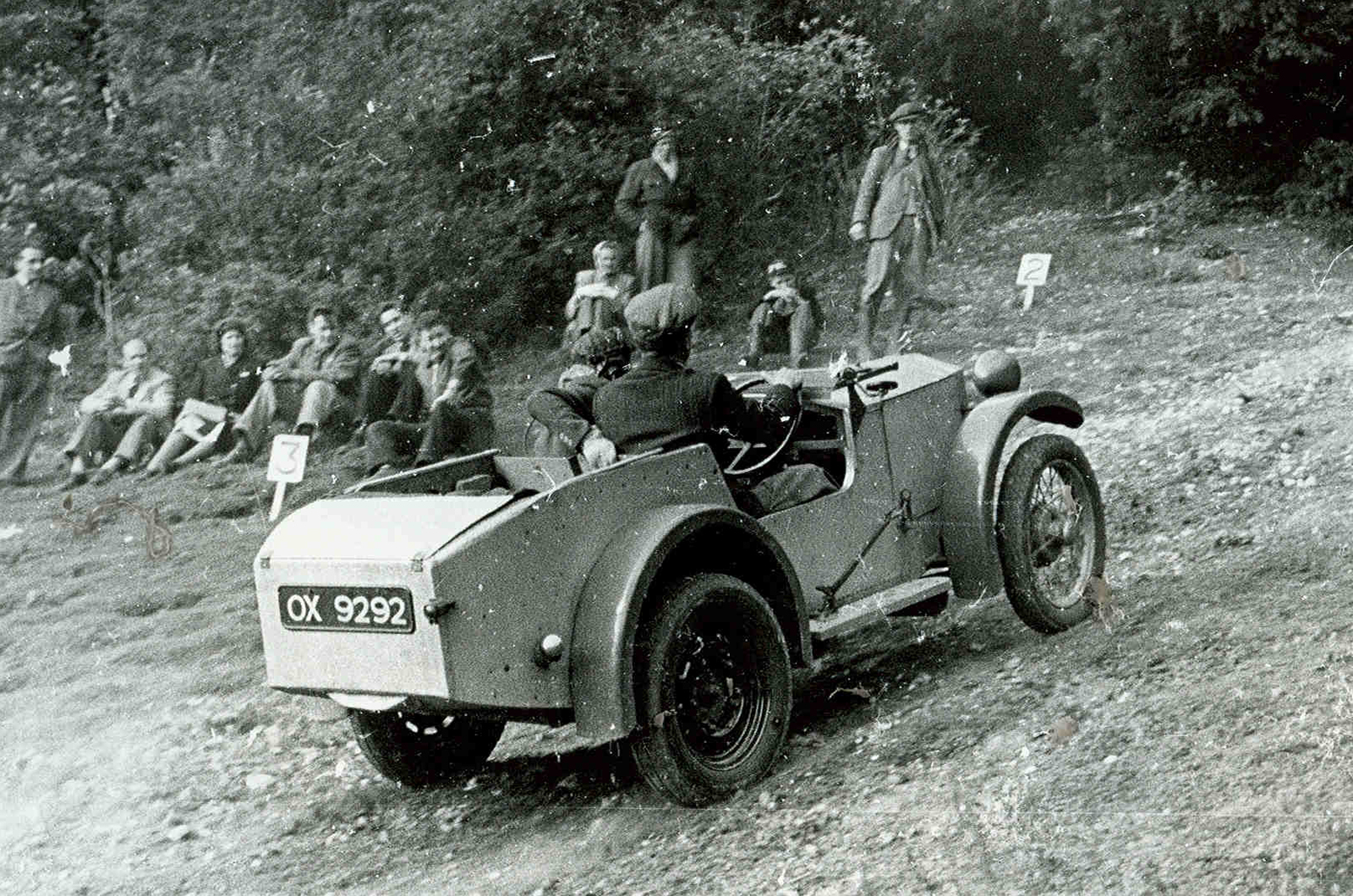
Chapman campaigning the Lotus Mark I in which he enjoyed success
Jenkinson was writing shortly before Chapman fully devoted his formidable brain to Formula One success with his own Lotus company.

